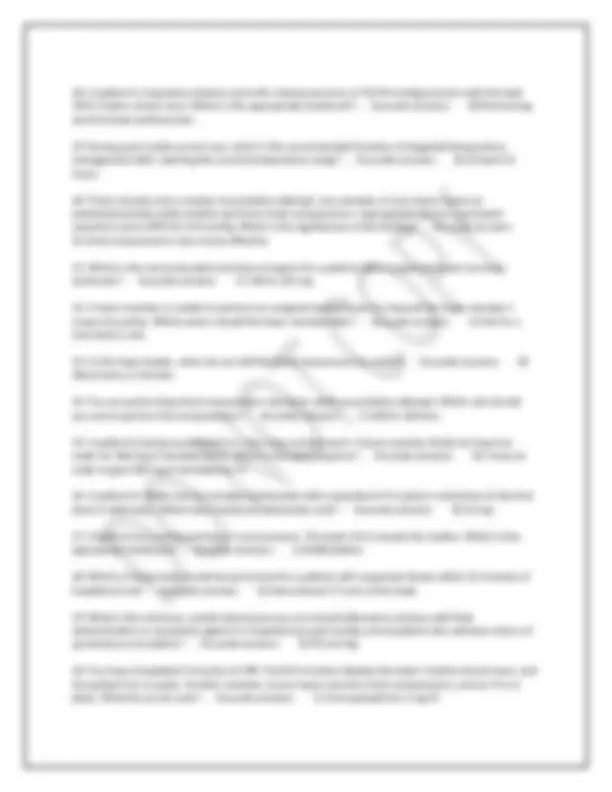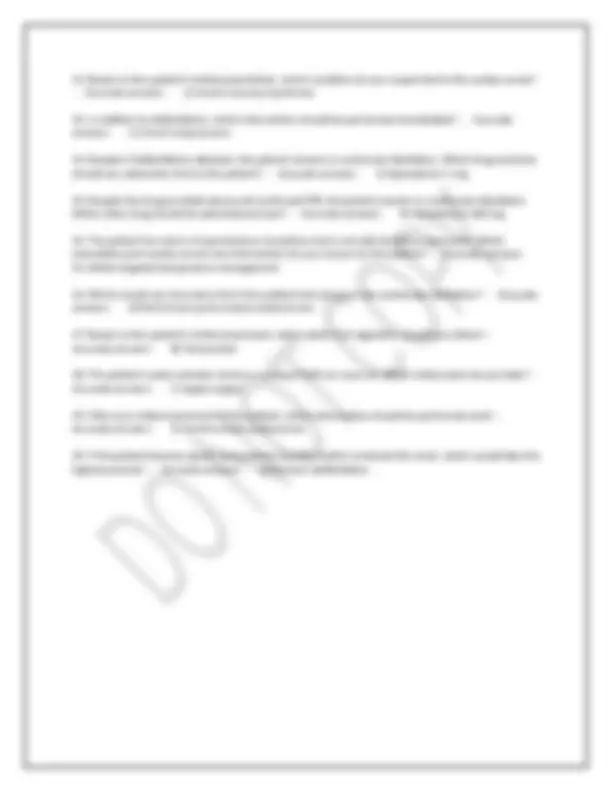ACLS: FINAL TEST QUESTIONS WITH 100%
ANSWERS
1. Which type of atrioventricular block best describes this rhythm? - Accurate answers C) Second-
degree type II
2. Your patient is in cardiac arrest and has been intubated. To assess CPR quality, which should you do? -
Accurate answers A) Monitor the patient's PETCO2
3. Which facility is the most appropriate EMS destination for a patient with sudden cardiac who
achieved return of spontaneous circulation in the field? - Accurate answers D) Coronary
reperfusion-capable medical center
4. Which of the following signs is a likely indicator of cardiac arrest in an unresponsive patient? -
Accurate answers C) Agonal gasps
5. Which type of atrioventricular block best describes this rhythm? - Accurate answers B) Second-
degree atrioventricular block type I
6. To properly ventilate a patient with a perfusing rhythm, how often do you squeeze the bag? -
Accurate answers B) Once every 5 to 6 seconds.
7. In addition to clinical assessment, which is the most reliable method to confirm and monitor correct
placement of an endotracheal tube? - Accurate answers C) Continuous waveform capnography
8. You are caring for a patient with a suspected stroke whose symptoms started 2 hours ago. The CT
scan was normal, with no signs of hemorrhage. The patient does not have any contraindications to
fibrinolytic therapy. Which treatment is the best for this patient? - Accurate answers B) Start
fibrinolytic therapy as soon as possible.
9. Which best describes this rhythm? - Accurate answers D) Third-degree atrioventricular block.
10. What is the recommended range from which a temperature should be selected and maintained
constantly to achieve targeted temperature management after cardiac arrest? - Accurate answers
C) 32 to 36 Degrees Celsius
11. Which is the recommended first intravenous dose of amiodarone for a patient with refractory
ventricular fibrillation? - Accurate answers D) 300 mg
12. What is the primary of a medical emergency team or rapid response team? - Accurate answers
B) Improving patient outcomes by identifying and treating early clinical deterioration.
13. What is the recommended next step after a defibrillation attempt? - Accurate answers D)
Resume CPR, starting with chest compressions












